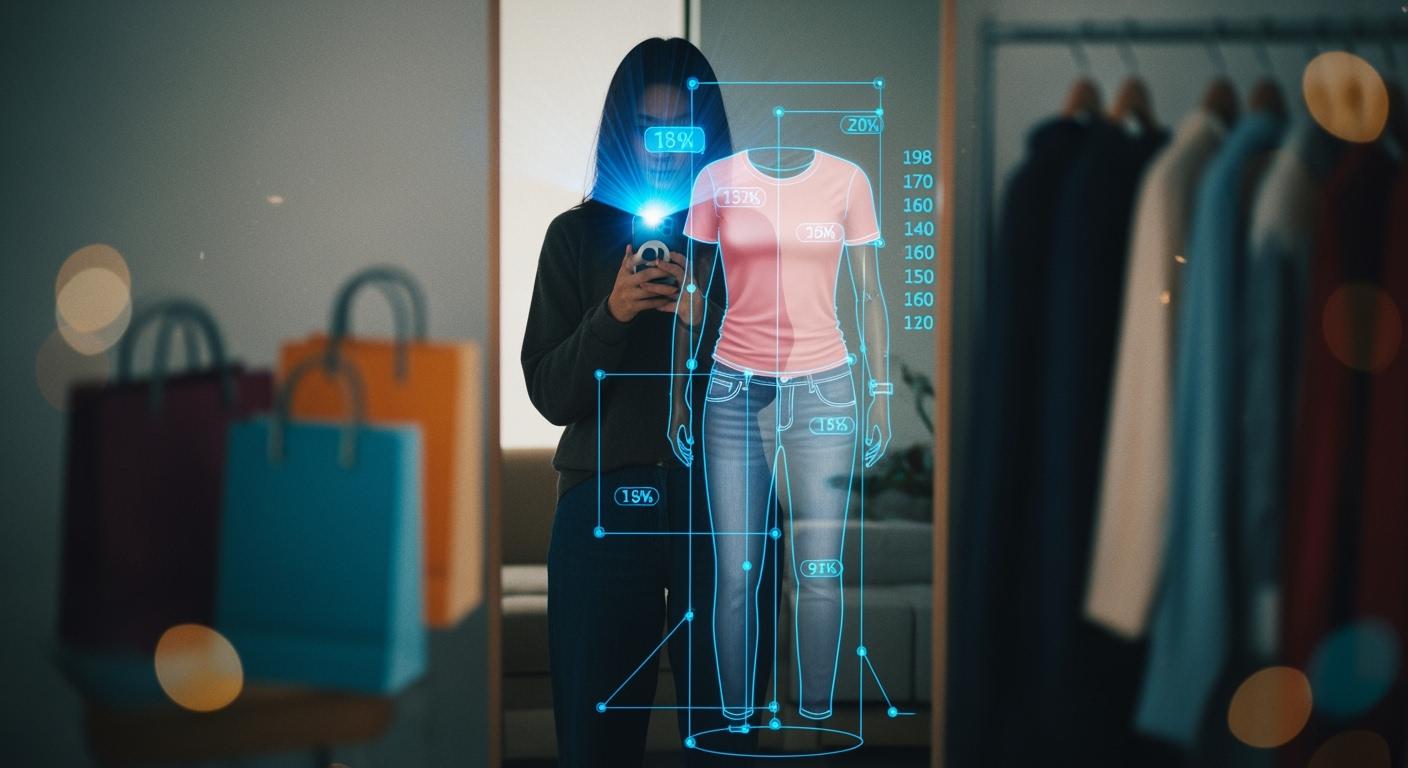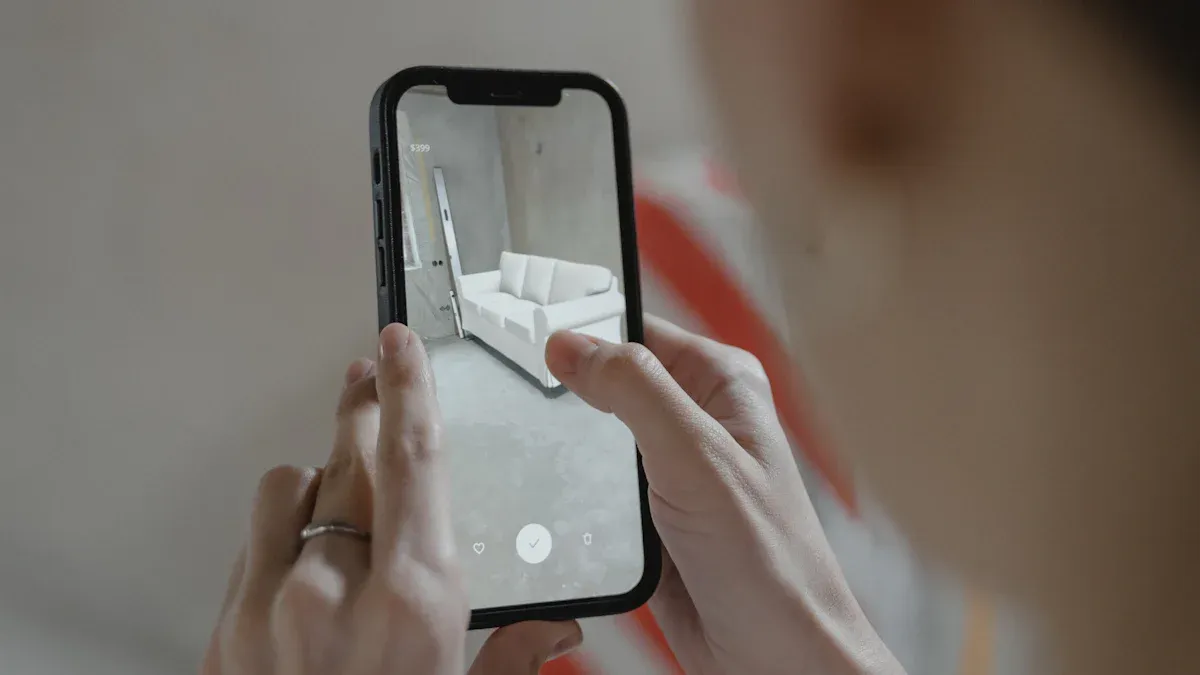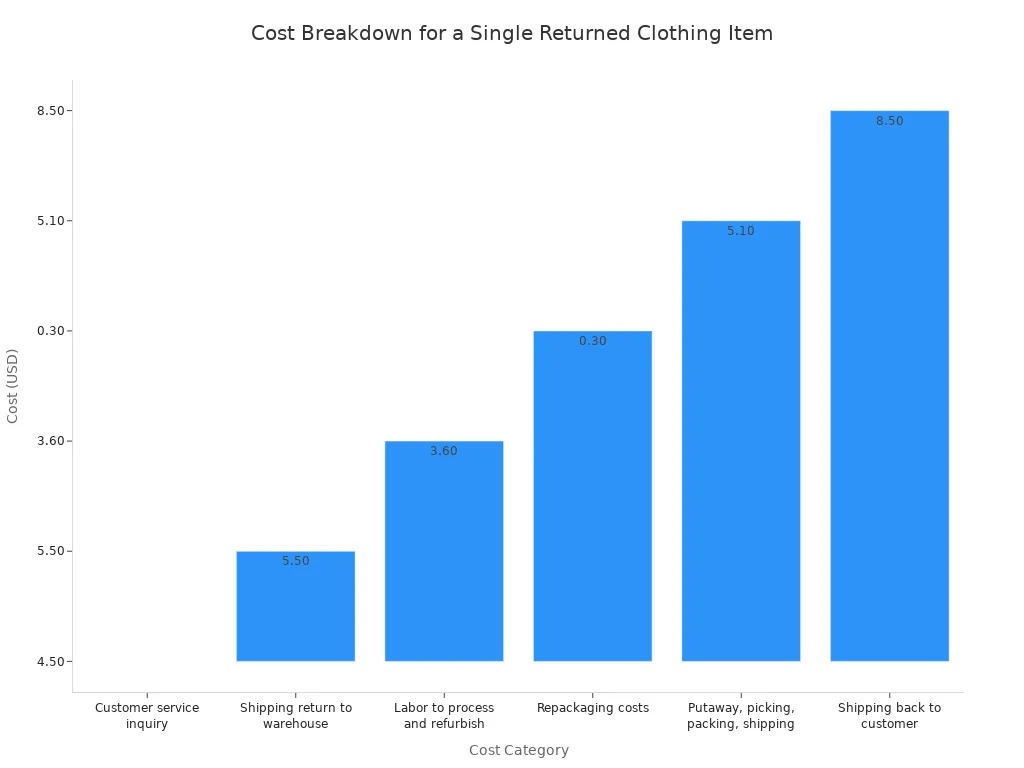
Shoppers often receive online clothing orders with a poor fit. This common issue leads to a high volume of returns. The main cause for these returns is the fit problem, with sizing issues accounting for over 53% of all apparel returns. AI technology now provides powerful solutions. AI helps reduce returns for a better fit. These AI solutions solve the e-commerce fit problem. AI boosts sizing confidence for shoppers. AI makes buying clothing online more reliable. AI improves the entire experience. AI is the key.
Online Clothing Return Rates | Region/Category | Return Rate | |---|---| | U.S. Clothing (average) | 26% | | Europe (online, general) | 25-40% | | Germany (online fashion) | 44% |
AI-powered sizing to reduce returns

AI-powered solutions directly address the core reasons for clothing returns. These systems use data to move beyond generic size charts. They offer a level of personalization that was previously impossible in e-commerce. AI provides two main methods for better fitting. It analyzes data and uses body scans for precise measurements. This technology is key to solving sizing issues.
Analyzing purchase and return data
AI algorithms analyze massive amounts of information to predict the best fit. These systems review a shopper's purchase history. They learn from the sizes customers keep and the items they send back. AI also studies the preferences of similar shoppers to improve its recommendations. This process helps create highly accurate size recommendations.
This data-driven approach allows for deep personalization. For example, AI can identify a customer who often returns shoes for a poor fit. The system then suggests better alternatives for that specific person. It can even add helpful notes to product pages.
AI-Powered Tip 💡 An AI system might display a message like, "This item runs large. We recommend ordering one size down based on your past purchases." This simple warning prevents a likely return.
Leading companies use this technology effectively. Amazon’s Fit Insights tool uses large language models (LLMs) to understand customer feedback. The AI processes reviews and return comments about a product's fit, style, and fabric. It finds patterns in the data. This helps brands fix their size charts and reduce fit-related returns. By learning from every interaction, AI continuously refines its fitting advice. This smart analysis of data is crucial to lower return rates.
Using body scans for precise measurements
AI also uses computer vision to solve the fit problem. Shoppers can use their smartphone cameras to get precise body measurements. Standard phone cameras are good enough for these AI systems to work well. The quality of the camera can affect the final accuracy, but specialized hardware is not needed.
The AI technology guides users to take a few photos or a short video. It then creates a 3D model of the user's body or extracts key measurements. This process captures hundreds of data points to build a detailed profile of the customer body data. This customer body data is far more accurate than manual methods.
- Manual Tape Measure: Achieves about 80-85% accuracy.
- AI Body Scan: Captures measurements with millimeter accuracy.
This high level of accuracy eliminates the guesswork from sizing. Companies like Nike use AI for their Nike Fit feature, which scans feet with sub-2mm accuracy for a perfect shoe fit. Size recommendation engines then take this precise customer body data. They compare the customer body data to the specific dimensions of each piece of clothing. The result is a recommendation tailored to both the person's body and the garment's design. This precise fitting process gives shoppers confidence and is one of the most effective ways to reduce returns. Better fitting from better data means fewer returns.
Visual solutions for the fit problem

Visual tools offer another powerful way to solve the online fit problem. These technologies help shoppers see how garments look on their bodies before they buy. AI powers these visual solutions, creating interactive and personalized experiences. This approach builds confidence and directly reduces the chance of a return due to poor fit.
Virtual try-on with AI avatars
Virtual try-on technology creates a digital fitting experience. Shoppers can upload a photo of themselves. An AI system then generates a hyper-realistic avatar. This AI uses the shopper's unique body data to show how different clothing items will look and fit. The technology creates a seamless visual, complete with realistic proportions, lighting, and textures. This process gives a clear idea of the final fit.
This AI-driven fitting makes the shopping journey more personal. It helps customers make confident purchasing decisions. They can see how a style looks on their specific body data, not just on a model. This interactive fitting rivals the in-store experience. Retailers see significant benefits from these AI solutions.
Success with Virtual Fitting Early programs using virtual try-on and avatars report a reduction in return rates. Some retailers have cut returns by 20%. This shows the direct impact of visual AI on the fit problem.
Many brands use AI to improve the customer journey.
- River Island uses fashion AI to offer personalized outfits. This led to a 6% revenue increase in just one year.
- Belstaff implemented AI for product recommendations. The company saw a 69% increase in revenue from emails.
- Amazon is a major player in this space. It acquired Body Labs, a company specializing in 3D body models, to improve its virtual fitting technology.
These AI tools transform flat product images into professional model photos. The AI can generate models from diverse demographics and body types. This gives shoppers a better reference for sizing and fit. The AI provides a powerful tool for a better fitting experience.
Eliminating guesswork with AR previews
Augmented reality (AR) offers another innovative solution. AR technology eliminates guesswork by overlaying digital clothing onto a shopper's real-time image. This creates a virtual fitting room experience using a smartphone camera or a smart mirror. The AI uses computer vision and body tracking to map the user's body. It ensures the virtual garment moves naturally with the person.
This technology relies on advanced AI algorithms. Depth-sensing cameras capture 3D information from the user's body data. This allows the system to understand the body's shape and ensure the clothing drapes realistically. The AI renders the garment onto the user's image frame by frame for a seamless overlay. This high level of accuracy provides a true-to-life preview of the fit.
Several brands have successfully used AR to help customers.
- Zalando launched a virtual try-on feature on Snapchat. Users upload a full-body photo to try on items from an avatar, helping them check the fit.
- Adidas introduced an AR feature in its app. Customers could virtually try on shoes to see how they looked on their feet before buying.
These AR previews provide an engaging and practical way to check an item's fit and style. The AI technology gives shoppers the confidence they need, making them more likely to be happy with their purchase.
The impact of solving poor fit
Solving the online fit problem with AI creates significant benefits for both shoppers and retailers. AI technology transforms the e-commerce experience. It builds shopper confidence and delivers major financial savings for brands. This dual impact makes AI a crucial tool in modern retail.
More confidence for the shopper
Receiving clothing that fits perfectly has a powerful psychological effect. Well-fitting clothing boosts a person's confidence and self-perception. This positive feeling improves their overall attitude. AI helps create this feeling by delivering a personalized fitting experience. AI tools provide accurate size recommendations that remove the fear of ordering the wrong item.
This personalization builds a stronger connection between the shopper and the brand. AI systems give customers a personalized experience by showing how items will look on their unique bodies. This visual confirmation reduces uncertainty and increases sizing confidence. When a shopper trusts a brand's fitting recommendations, they feel more secure in their purchase. This improved fit leads to higher satisfaction and a better perception of the brand.
Lowering costs from clothing returns
High return rates create huge costs for retailers. Processing returns involves expenses for shipping, labor, and repackaging. These return-related losses add up quickly.
The True Cost of a Return Processing a single returned clothing item can cost a retailer a total of $40.75. This includes customer service, shipping both ways, and labor.

AI directly tackles this financial drain. AI-powered size recommendations can lower return rates by 25-40%. For example, one Shopify brand using AI saw its fit-related returns drop by 40.5% in four months. This average reduction in fit-related returns shows how effective AI is. By preventing returns from poor fit, AI helps brands save millions. This allows companies to reinvest in product quality and the customer journey. Ultimately, AI helps to reduce returns and strengthen the business's bottom line. The average reduction in fit-related returns proves the value of this technology.
AI-driven tools are the most effective solutions for the online fit problem. These AI systems directly reduce returns from poor fit. This technology creates a clear win-win. Shoppers receive clothing with a perfect fit, and retailers see lower return rates. AI can cut returns by up to 35%. This saves money and builds customer loyalty. The future of e-commerce is smarter with AI. AI makes online shopping more sustainable and reliable by optimizing inventory and minimizing waste from returns. AI is transforming the fitting experience and solving the fit problem.
FAQ
How does ai know my size?
AI systems analyze data to predict your best fit. The ai learns from your past purchases and returns. It also compares your shopping habits to those of similar customers. This process helps the ai make very accurate size recommendations for you.
Is my personal data safe with ai sizing tools?
Yes, brands take data privacy seriously. They use secure methods to handle your information. The ai uses your body data only to create size recommendations. Companies protect this data and do not share it without your permission. The ai keeps information anonymous when possible.
Can ai help with shoe fitting too?
Yes, ai technology works very well for shoes. Some apps use your phone's camera to scan your feet. This ai scan measures your feet with high accuracy. The system then suggests the perfect shoe size, which helps prevent returns from poor-fitting footwear.
What is the main benefit of using ai for shoppers?
The main benefit is confidence. Shoppers can trust the size recommendations from the ai. This reduces the worry of ordering the wrong size. The ai makes online shopping easier and more reliable, ensuring clothes fit well the first time.
See Also
Intelligent AI Solutions Revolutionize Fashion Returns for Enhanced Efficiency
Eco-Friendly AI Innovations: Shaping a Sustainable Future for Fashion
Optimized AI Logistics: Significantly Reducing Fashion Delivery Times by 22%
Balancing Fashion's Future: Predictive Analytics Optimizes Supply and Demand
Leveraging Sales Data for Highly Accurate Fashion Trend Predictions